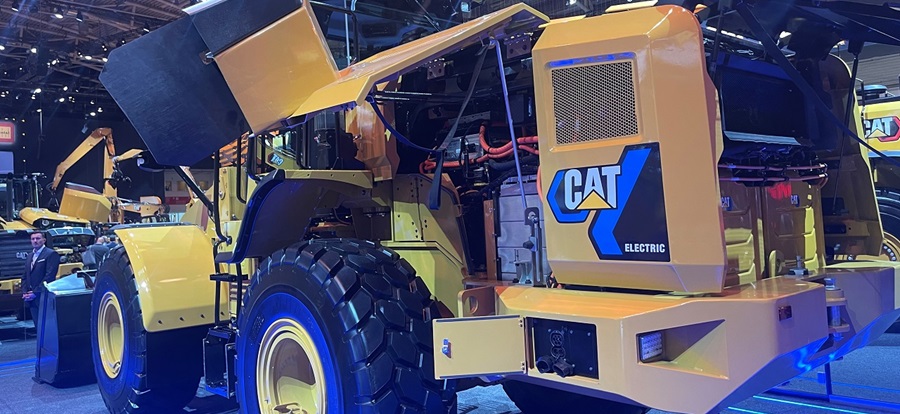Heavy equipment electrification: Re-inventing the industry

Electrification is clearly hot in the heavy equipment industry – and by extension everything related to sustainability. That trend was very visible when I visited Bauma in Munich, Germany in 2022. I saw all OEMs seeking the spotlights working around heavy equipment electrification themes. Lots of applications on connectivity and digitalization as well. In the wake of the pandemic, facing inflation and amid a geopolitical crisis, it was refreshing to see the innovation spirit in the industry is still alive and kicking!
It seems that for now, however, battery-driven heavy equipment electrification remains primarily reserved for smaller types of machines, like mini-excavators and compact loaders. Batteries for daily duty cycles with long operational hours and high energy consumption would be far too expensive (into the mid-to upper six figures). For such applications, most OEMs prefer exploring other options, ranging from tethered cable equipment attached to the grid, to hybrid configurations where a combustion engine takes the role of a generator that can be switched on and off, to solutions based on fuel cells or even hydrogen combustion, and more.
A global focus on sustainable development
Recently, EU lawmakers approved a ban on new sales of fossil fuel cars as of 2035. As part of the same plan, heavy vehicles like trucks and coaches will have to cut their emissions by 90% by 2040. City buses will have to be zero emission by 2030. Just like the UK, US and Japan, the EU wants to be climate neutral by 2050. Germany even aims for 2045, and China for 2060. For sure, the heavy equipment industry is also on the radar. IDTechEx calculated construction machines account for about 1.1% of global carbon emissions, which is more than entire countries like France, Italy, the UK, Turkey, or South Africa. It’s clear that transitioning the industry to alternative power sources is high on the agenda.
Heavy equipment complexity – do you embrace it or minimize it?
All those innovations enable a totally new scope of capabilities, including use cases that require zero emissions and/or low noise. That is obviously great. But on the flipside, they add complexity. OEMs will have to make additional investments in R&D, transform their current offering, and will most likely end up with a larger and more diverse product portfolio. That creates challenges on all levels of the organization, and in all aspects of product engineering and heavy equipment design. And this complexity will only keep growing, as electrification goes hand in hand with other industry trends like connectivity and autonomous operation, which translate into similar organizational and technical challenges.
The pace at which OEMs must reinvent themselves today, is something I’ve never witnessed in over 25 years I’ve been in the business. Transitioning from predominantly hydro-mechanical to more software-driven, electrified, highly connected equipment is massive. Still, looking at those industry giants with their longstanding traditions and practices, I am always amazed at how agile they can adapt when it is necessary. I see two directions in which they approach complexity. First, they try to contain it, for example by rebalancing their portfolio for profitability. Second, they embrace complexity and turn it into a competitive advantage. They invest in significant R&D improvement and in transforming their business for increased agility through digitalization.
Each OEM transitions at a pace and on a scale that is in line with their strategy and business priorities. Everyone realizes that to be successful, they will need a thorough digitalization and integration of all their product-related activities. But that is easier said than done, as the way many of those organizations grew over time, involving many acquisitions, led them to have a very diversified IT landscape with many disconnected tools and processes. Those who can most effectively overcome these legacy challenges will be first to deliver the equipment the market needs today, while meeting the required quality and performance.
The future of heavy equipment electrification
These big industry shows (Bauma and Conexpo) provide a unique opportunity to discover recent advancements in innovations with electric equipment or hydrogen combustion engines. I am really excited to see how our industry is taking the next step in delivering zero-emission solutions for heavy equipment, providing an important contribution to help societies around the globe meet their timelines for reducing greenhouse gas emissions.
Learn more about how a construction equipment manufacturer used Simcenter Amesim to develop the first electric wheeled excavator.

